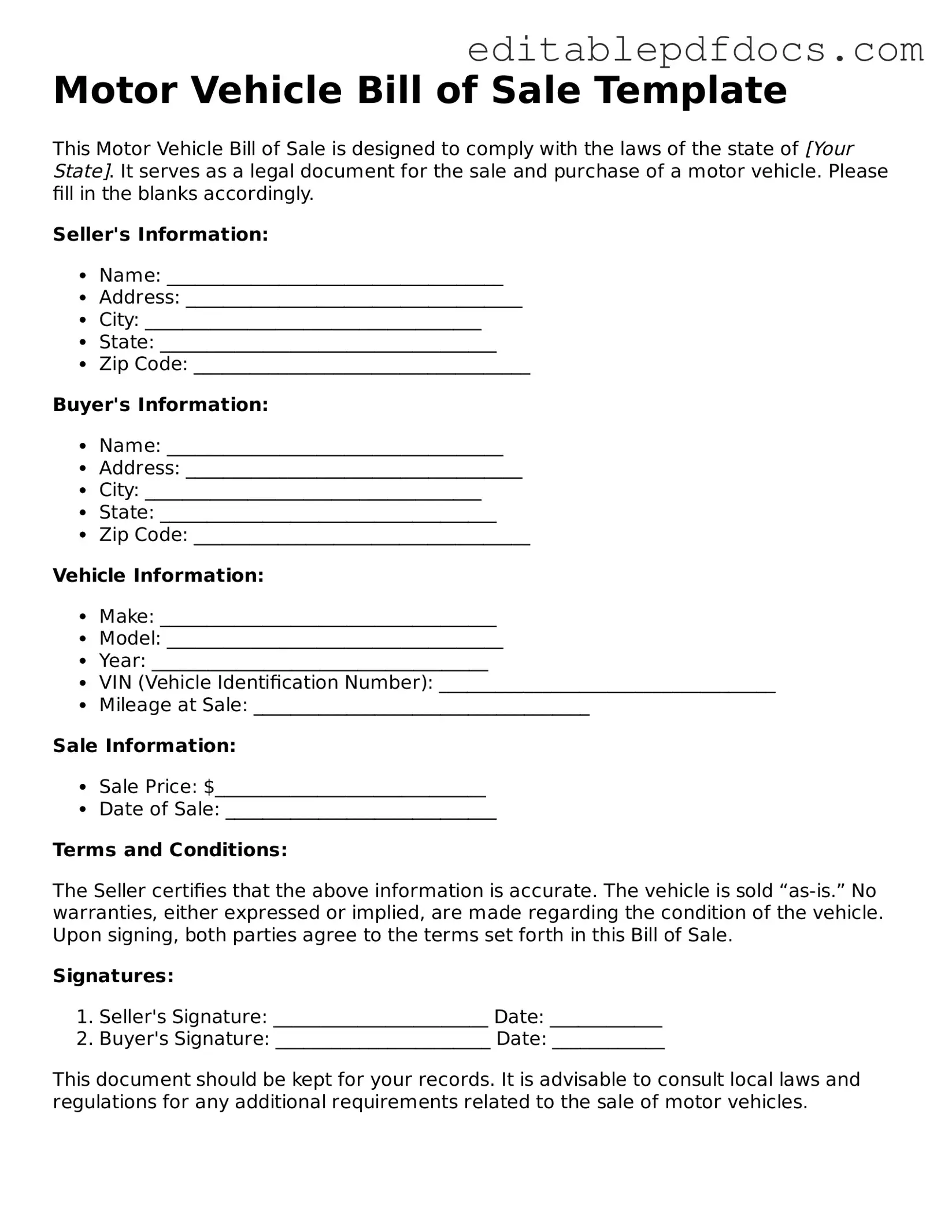Filling out a Motor Vehicle Bill of Sale form can seem straightforward, but many people make common mistakes that can lead to complications down the road. One frequent error is neglecting to include all necessary details about the vehicle. This includes the Vehicle Identification Number (VIN), make, model, year, and odometer reading. Omitting any of this information can create confusion and may even result in legal issues later on.
Another mistake is failing to accurately identify the buyer and seller. It’s crucial that both parties’ names, addresses, and contact information are clearly stated. If there’s any ambiguity regarding who is buying or selling the vehicle, it could lead to disputes or difficulties in transferring ownership.
People often overlook the importance of signatures. Both the buyer and the seller must sign the form to validate the transaction. Without these signatures, the document may not hold up in legal situations. Additionally, it’s wise to have a witness or notary present to further authenticate the sale.
Some individuals forget to specify the sale price. Leaving this blank or writing an incorrect amount can create problems for both parties, especially when it comes to taxes or future resale of the vehicle. Always ensure that the sale price is clearly indicated and agreed upon.
Another common error involves not providing a date for the transaction. This detail is vital, as it establishes when the sale took place. Without a date, it can be difficult to prove the timeline of ownership, which may lead to complications if questions arise later.
People also sometimes fail to check local regulations regarding the Bill of Sale. Different states have varying requirements for what must be included in this document. Ignoring these regulations can result in an invalid sale or additional paperwork down the line.
Additionally, some sellers may not disclose important information about the vehicle's condition. Being upfront about any issues can prevent future disputes and build trust between the buyer and seller. Hiding defects can lead to legal repercussions if the buyer discovers problems after the sale.
Finally, many people forget to keep a copy of the completed Bill of Sale for their records. This document serves as proof of the transaction and can be invaluable if any disputes arise in the future. Always ensure that both parties retain a signed copy for their own records.
